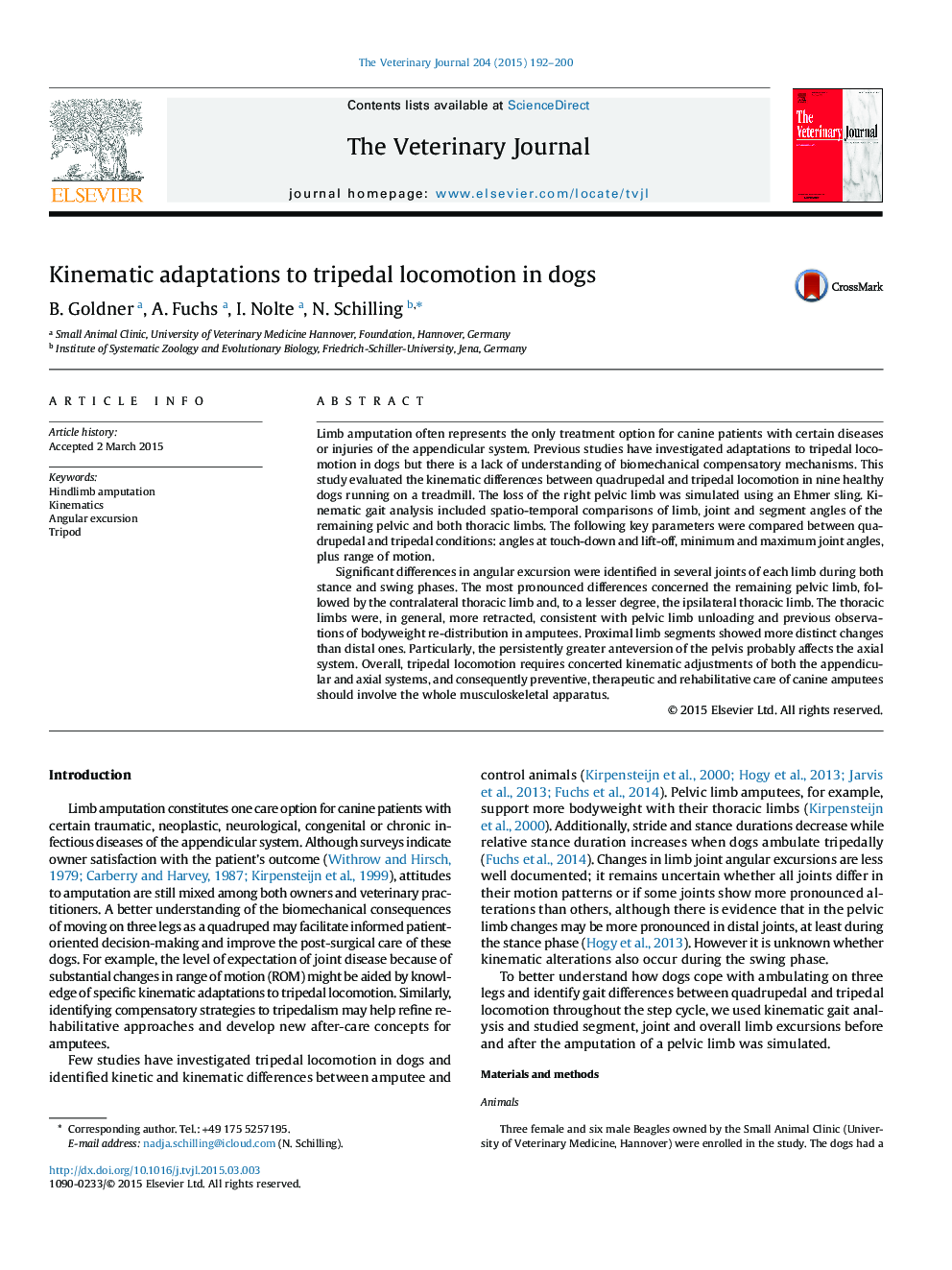| کد مقاله | کد نشریه | سال انتشار | مقاله انگلیسی | نسخه تمام متن |
|---|---|---|---|---|
| 2463827 | 1111751 | 2015 | 9 صفحه PDF | دانلود رایگان |
• Significant kinematic differences affect both stance and swing phases.
• The most affected limb is the remaining pelvic limb.
• Kinematic compensation of pelvic limb loss results in changes in all limb joints.
• Greater retroversion of the thoracic limbs facilitates pelvic limb unloading.
• Proximal limb segments show greater changes than distal ones.
Limb amputation often represents the only treatment option for canine patients with certain diseases or injuries of the appendicular system. Previous studies have investigated adaptations to tripedal locomotion in dogs but there is a lack of understanding of biomechanical compensatory mechanisms. This study evaluated the kinematic differences between quadrupedal and tripedal locomotion in nine healthy dogs running on a treadmill. The loss of the right pelvic limb was simulated using an Ehmer sling. Kinematic gait analysis included spatio-temporal comparisons of limb, joint and segment angles of the remaining pelvic and both thoracic limbs. The following key parameters were compared between quadrupedal and tripedal conditions: angles at touch-down and lift-off, minimum and maximum joint angles, plus range of motion.Significant differences in angular excursion were identified in several joints of each limb during both stance and swing phases. The most pronounced differences concerned the remaining pelvic limb, followed by the contralateral thoracic limb and, to a lesser degree, the ipsilateral thoracic limb. The thoracic limbs were, in general, more retracted, consistent with pelvic limb unloading and previous observations of bodyweight re-distribution in amputees. Proximal limb segments showed more distinct changes than distal ones. Particularly, the persistently greater anteversion of the pelvis probably affects the axial system. Overall, tripedal locomotion requires concerted kinematic adjustments of both the appendicular and axial systems, and consequently preventive, therapeutic and rehabilitative care of canine amputees should involve the whole musculoskeletal apparatus.
Journal: The Veterinary Journal - Volume 204, Issue 2, May 2015, Pages 192–200
